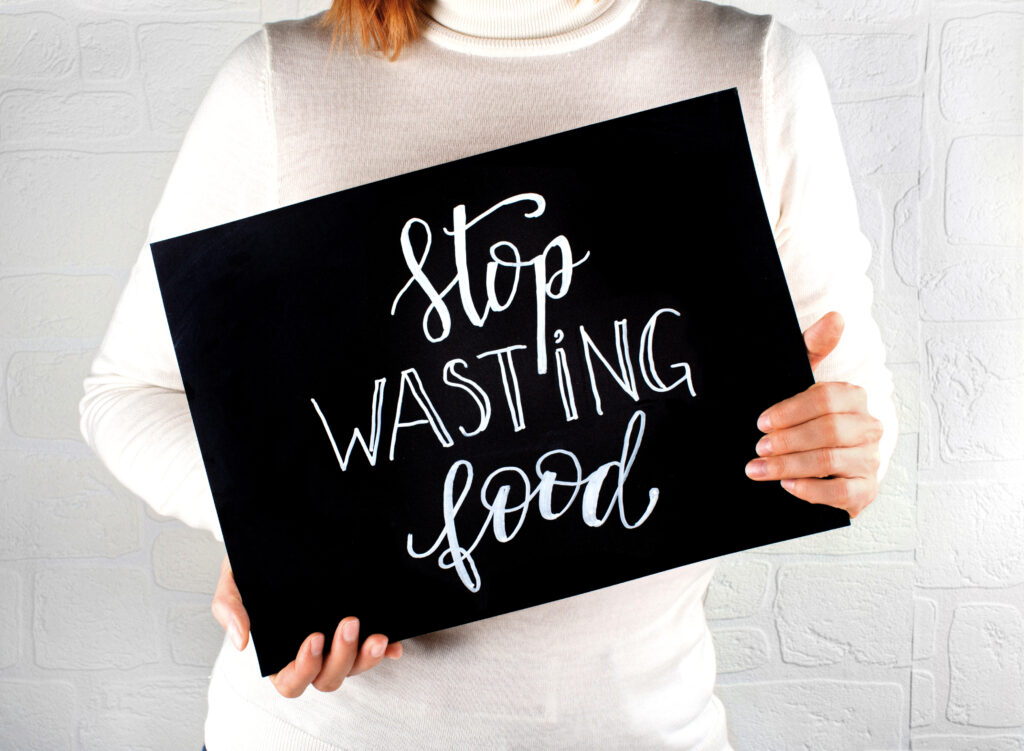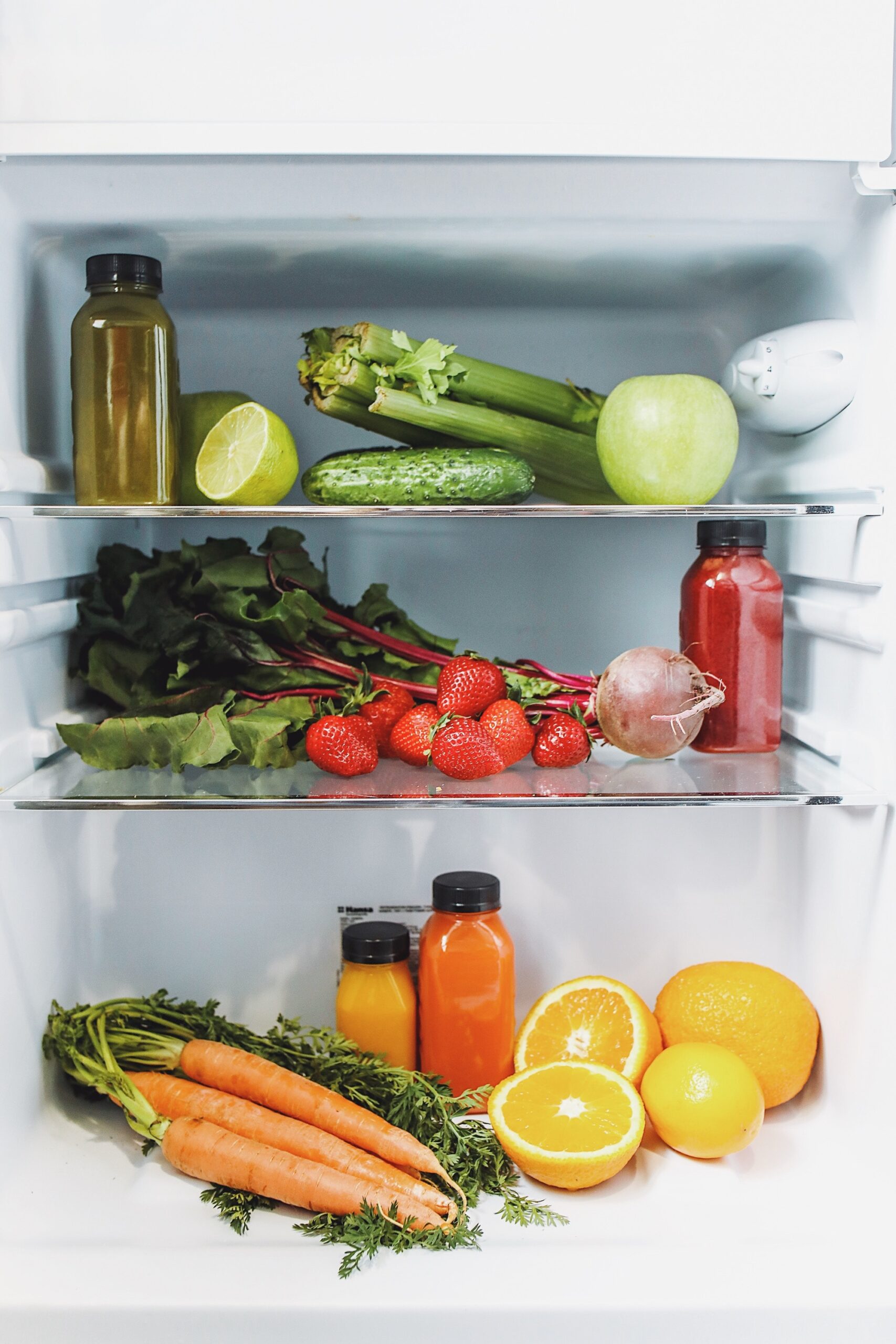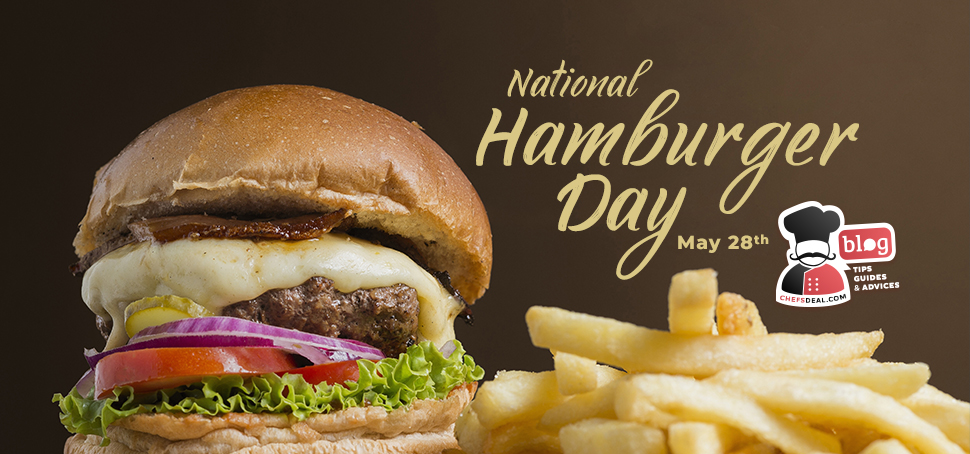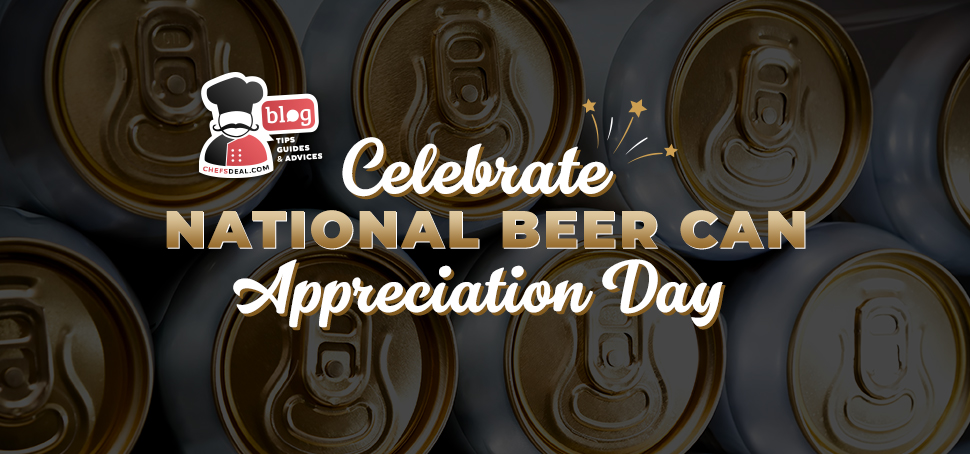National Stop Food Waste Day is an international initiative that was started by Compass Group, a culinary service company, to reduce food waste in the United States and all around the world. Having witnessed the immense amount of food that is spoiled and wasted every day, the Compass Group announced Stop Food Waste Day in 2017, and this project went into global recognition in 2018.

What is Food Waste, and When is National Stop Food Waste Day?
As clearly defined by Harvard University, the term “food waste refers to food that is fit for consumption but consciously discarded at the retail or consumption phases.”
27th of April, 2022, (last Wednesday in April) is designated as the National Stop Food Waste Day to raise awareness about the dangerous levels of food waste around the country. On this day, it is aimed to inform people about the reality of food waste in the United States and the world; to provide insight and guidance for the people to gain knowledge about the causes and results of food waste; and, to raise interest in the ways on how to reduce and stop food waste.
How Much Food is Wasted in the World?
Almost all throughout the history of humankind, finding enough food to sufficiently nourish the body was a vital priority in the activities of people. Thousands of years ago, humans strived to find the necessary food as hunter-gatherers, which required the maximum use of every pinch of food that was collected after a long struggle.

Although the agricultural revolution in human history enabled people to grow their food and store their production for later nourishment, ending the high probability of food scarcity and hunger became possible only after the revolutionary contribution of industrialization to food production. The introduction of agricultural machinery increased the crop output, while the pesticides and herbicides prevented crop failures. Particularly after the end of World War II, the food supply reached greater levels, and people did not have to worry about their future consumption, which ultimately resulted in food waste.
The centuries of food scarcity and the people’s habits to save food for later consumption have rapidly faded out and resulted in huge food waste both in residential areas as well as the food industry. Today, according to the stats of the United Nations;
- About 1.3 million metric tonnes of food (about one-third of food production for human consumption) are wasted or lost.
- The total cost of this food waste is estimated to surpass US$ 1 Trillion.
- If one-fourth of the wasted food could be saved, it would be sufficient to feed the 870 million people who suffer from hunger worldwide.
The situation in the United States of America is also striking and saddening. According to the USDA,
- More than 30% of food that is produced for human consumption is wasted at the retail and consumer levels in the US.
- The worth of this wasted food is around US$ 160 Billion.
The Reasons for Food Waste in the United States
As repeatedly shown by “the Stop Food Waste Day” initiative, the food waste in the United States has reached massive levels. Hence, this needs an urgent intervention to stop the squandering of edible food, clean water, and financial resources. To stop food waste, it is significant to know the reasons for the food waste at first, and these can be summarized as follows:

- Stop Food Waste Day aims to prevent food loss on every level, and therefore, the precautions should start at the beginning of the supply chain. Especially the fruits and vegetables incur significant losses during production and distribution because of the inappropriate transportation conditions and refrigeration problems.
- The other reason for food waste is related to consumer behavior. Consumers do not prefer deformed or misshapen fruits and vegetables, particularly in the retail stores and groceries; people tend to buy better-looking produce. Therefore, this results in the waste of these edible food products.
- Another reason is the lack of suitable refrigeration in the food selling and serving businesses. Almost all food products require properly refrigerated storage cabinets to retain their best conditions during display.
- Over-stocking or over-purchasing is also among the chief reasons for food waste, as it postpones the use of perishable products, thereby causing them to spoil and be wasted.
- Portioning requires close attention, and as the owner of a restaurant, you should maintain a critical balance between fair portions in return for your customers’ expense while being loyal to the principles of Stop Food Waste Day.
How to Reduce Food Waste in America?
As a result of the National Stop Food Waste Day efforts, people and some businesses have started to work to reduce food waste in America. When you consider the amount of wasted food, you may feel that it is impossible to stop this. Still, when every individual start working for reducing food waste at home, this will largely contribute to the overall food waste across the country.
However, food serving businesses cause a large share of food waste in the United States. As stated in the research titled “Ways to Reduce Restaurant Industry Food Waste Costs” by David Blum,
“Approximately 31% to 40% of the food served to customers never gets consumed. Researchers noted that in the United States, food waste uses 2% of the annual energy for consumption, 70% of the potable water, and 37% of the landmass.”
Therefore, to reach the goals of the National Stop Food Waste Day, the restaurants, catering companies, cafes, and other food and beverage companies must be a part of the works and efforts to stop food waste and utilize the sources that are lost with this squandered food.
How to Reduce Food Waste in Your Restaurant?
Here, we have gathered several helpful tips on how to prevent food waste in your business to make the most out of your stocks.
1. Conduct a Food Waste Audit
The first step to stopping food waste in your restaurant is to find out how you are wasting it and where the food waste comes from. You can start auditing your food waste by keeping records of what is thrown. You can have your personnel keep a written or digital track of the names and amount of ingredients, produces, and foods that go to thrash. In addition, you can also take note of the waste of the post-consumer leftovers.
Besides, you should also track your customer traffic for your restaurant by keeping records of the number of customers, the peak hours, and the weather conditions. This will definitely help you predict and plan your customer flow and provide you with solid stats on the volume of food you will need for the coming days.

2. Predict your needs and Avoid Over-stocking
The results of your waste auditing will help you forecast your food and ingredient needs and prevent the possibility of over-stocking, which will end up in food waste and financial losses. By evaluating your food waste data, you can analyze the actual food usage in your commercial kitchen and adjust your bulk purchases accordingly to stop food waste.
Additionally, you can predict the customer flow on certain days and at certain hours, which will enable you to prepare only a sufficient amount of pre-made ingredients, and meals by making use of the previous records. This will stop your food waste and save you money, time, and labor while helping the environment.

3. Store Food Properly
Food storing can be cited among the most significant steps to stop food waste. All food serving businesses are required to have suitable commercial refrigeration equipment as stated by the FDA food code to hinder bacteria growth and food spoilage. Therefore, you must equip your establishment with the proper commercial refrigerators and freezers.
Walk-in Refrigerators and Walk-in Freezers: Walk-in refrigerations are designed to meet the bulk storage needs of any commercial food establishment. They can be built in varying sizes and offer the convenience of use with precise temperature control, ample storage space, and easy-to-handle stocking. Walk-in refrigerators will be of great benefit for storing chilled products, milk, eggs, and other temperature-sensitive products at optimal conditions, while the walk-in freezers will preserve all your frozen treats and ingredients under secure conditions for more extended periods.
Reach-in Refrigerators and Reach-in Freezers: Commercial reach-in refrigerators and freezers are versatile units that can be used either as the primary storage for low-volume commercial kitchens while they can also serve as a beneficial cooling unit to keep the pre-made ingredients, meals, desserts, and dishes in refrigerated cabinets before being moved to the main walk-in freezer or being the served to the customers.
All refrigerated and frozen products are needed to be in the commercial refrigeration units until use. Therefore, you should be prepared with a plan and solution to handle refrigeration to stop food waste in case of an energy loss or breakdown of the equipment.

4. Handle Your Stocks Smartly
After storing your stocks in your commercial refrigeration equipment to stop food waste, you should carefully use the produce and products in your inventory. Therefore, you should apply a stable stock rotation by sticking to the FIFO method- First in, First Out- to enable your personnel to use the products that arrive first and send the products that come after to the back for later use (oldest items first.)
5. Evaluate Portion Sizes and Track The Popularity of Each Dish
As another precaution to stop food waste, you can start monitoring the portion sizes by evaluating the data you have collected during your waste audit. If post-consumer waste intensifies for specific meals or sides, you can decrease the amount of these products to stop food waste. Additionally, you can standardize your portions by getting a portioning food scale that will help you place an equal amount of portions on each dish.
If you offer food or salad buffet service to your customers, you are advised to evaluate the popularity of all dishes not to over-prepare of these food products. You can also encourage your customers to take their leftovers to their houses for later consumption. You can use disposable containers to pack the leftovers to stop food waste as well.

6. Start Donating to Local Charities or Offer Staff meals
There will still be leftovers in your restaurant despite careful planning, and you do not have to send your leftovers to landfills. You can donate the untouched food products to charities for the consumption of the needy.
Or, you can make use of the untouched leftovers to organize a staff meal, or you can give them to take these to their homes.

7. Compost to Stop Food Waste
Compost can be defined as an organic type of fertilizer that is used to enrich the soil with minerals and necessary nutrients. When you have any leftovers and remnants, you can use them for composting in your available space if you have a large field around your restaurant. If you do not have an opening for composting, you can contact composter companies, and they can take these to their application fields to use them as a part of their land fertilizing.

8. Train Your Staff to Stop Food Waste
The National Stop Food Waste Day is also crucial to raise the employees’ awareness of the food industry. As the manager or owner of a restaurant or a commercial kitchen, you should educate your staff on how to decrease food spoilage and waste by proper stocking, reading food labels, and carefully planning food preparation.

Conclusion
National Stop Food Waste Day has been started to raise awareness about the immense levels of food waste and trigger a collaboration among people and businesses to stop food waste around the United States and the world. These efforts to stop food waste should start in residential areas and individually. Still, it must be effectively carried out in the commercial kitchens and food catering establishments where there is also remarkable food waste.






